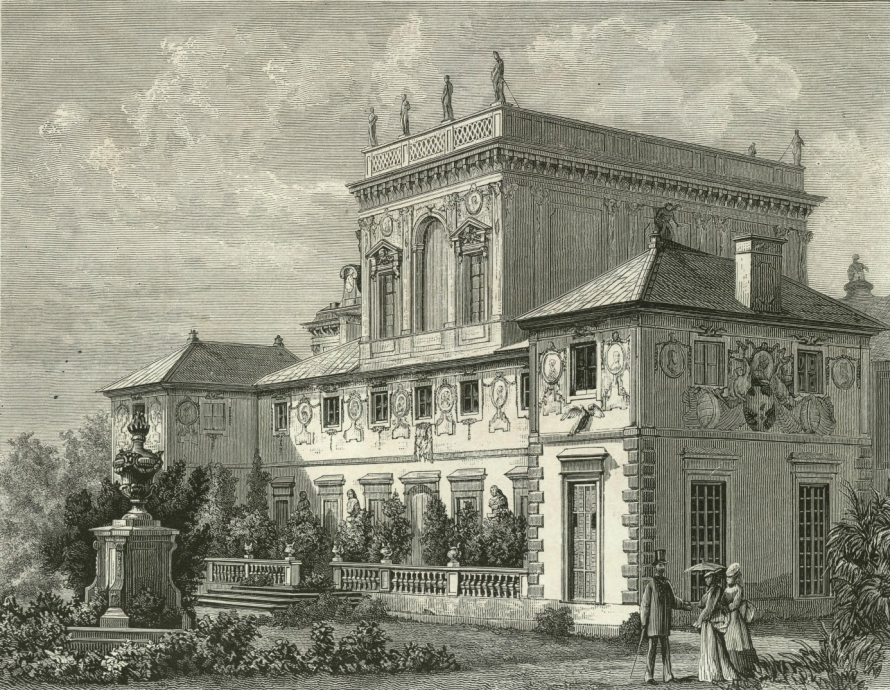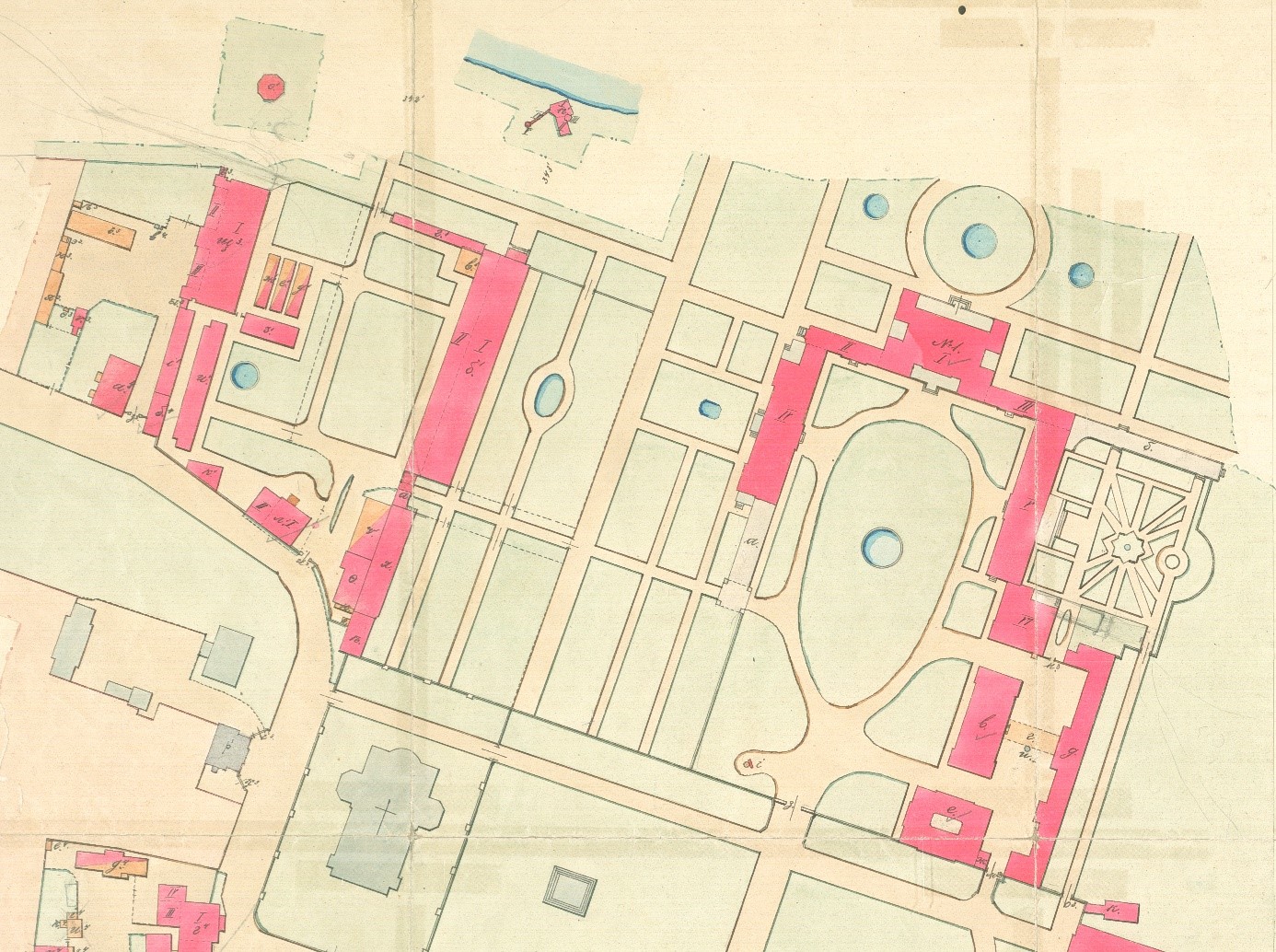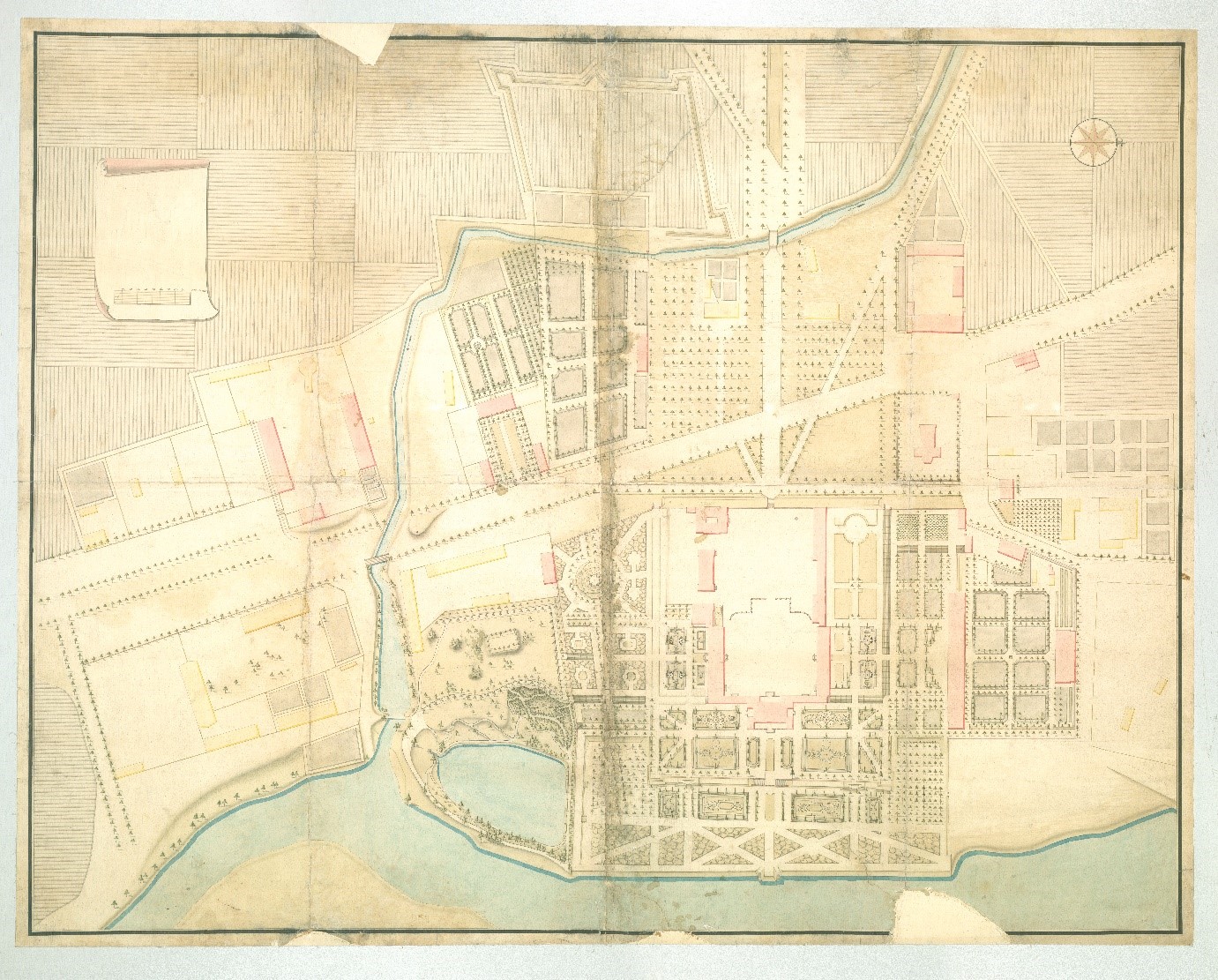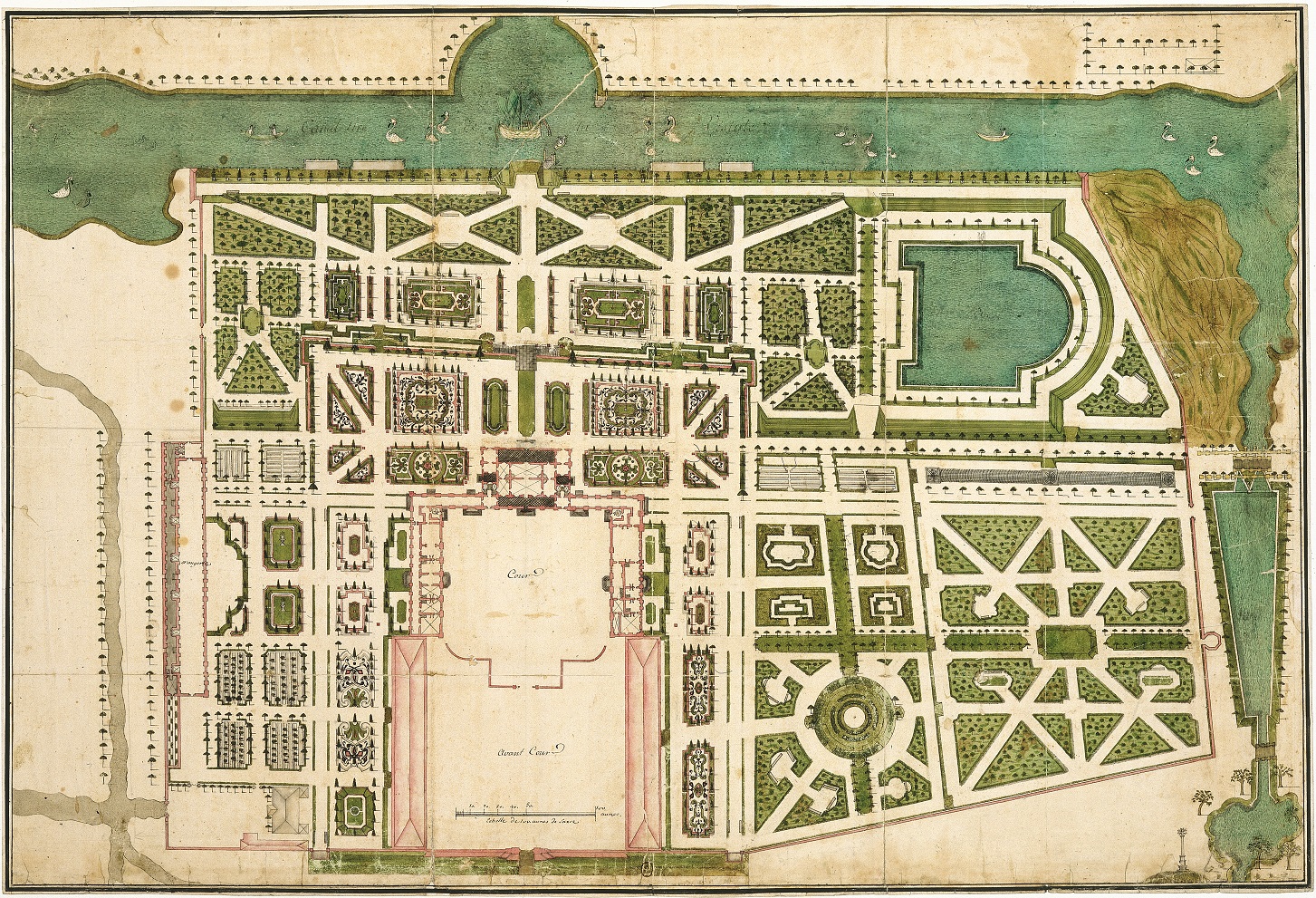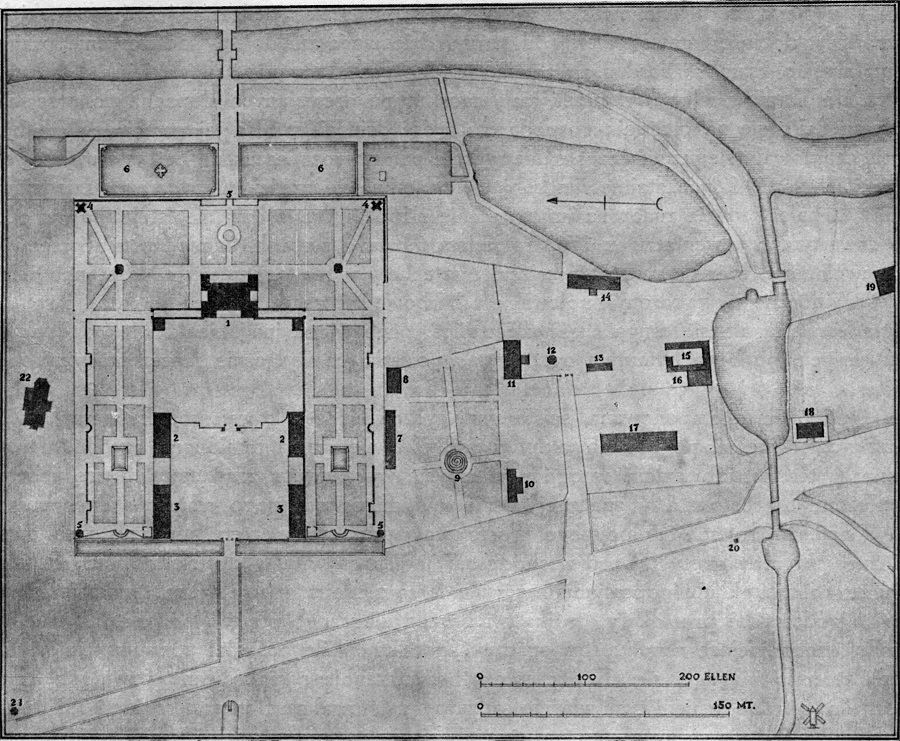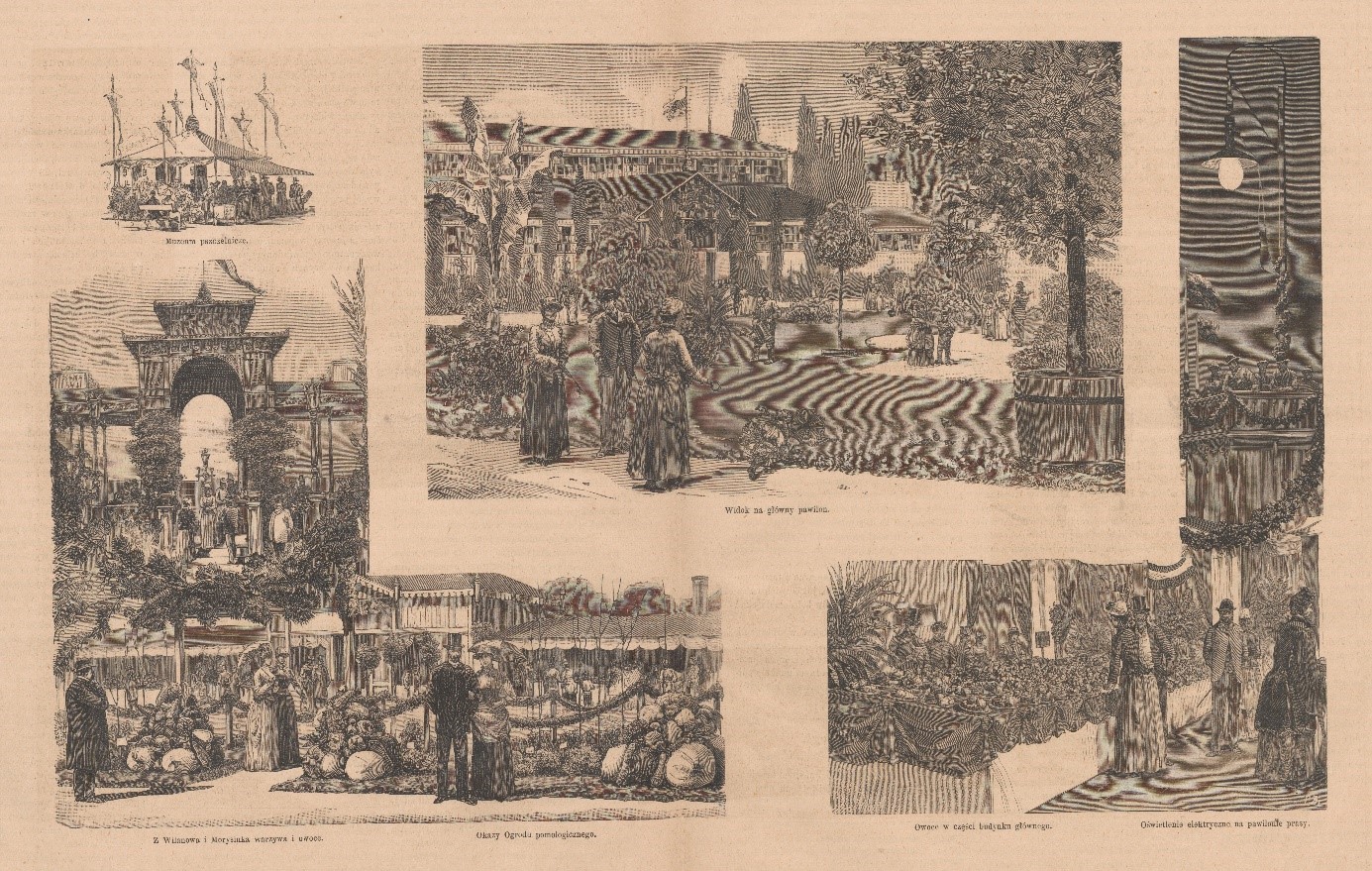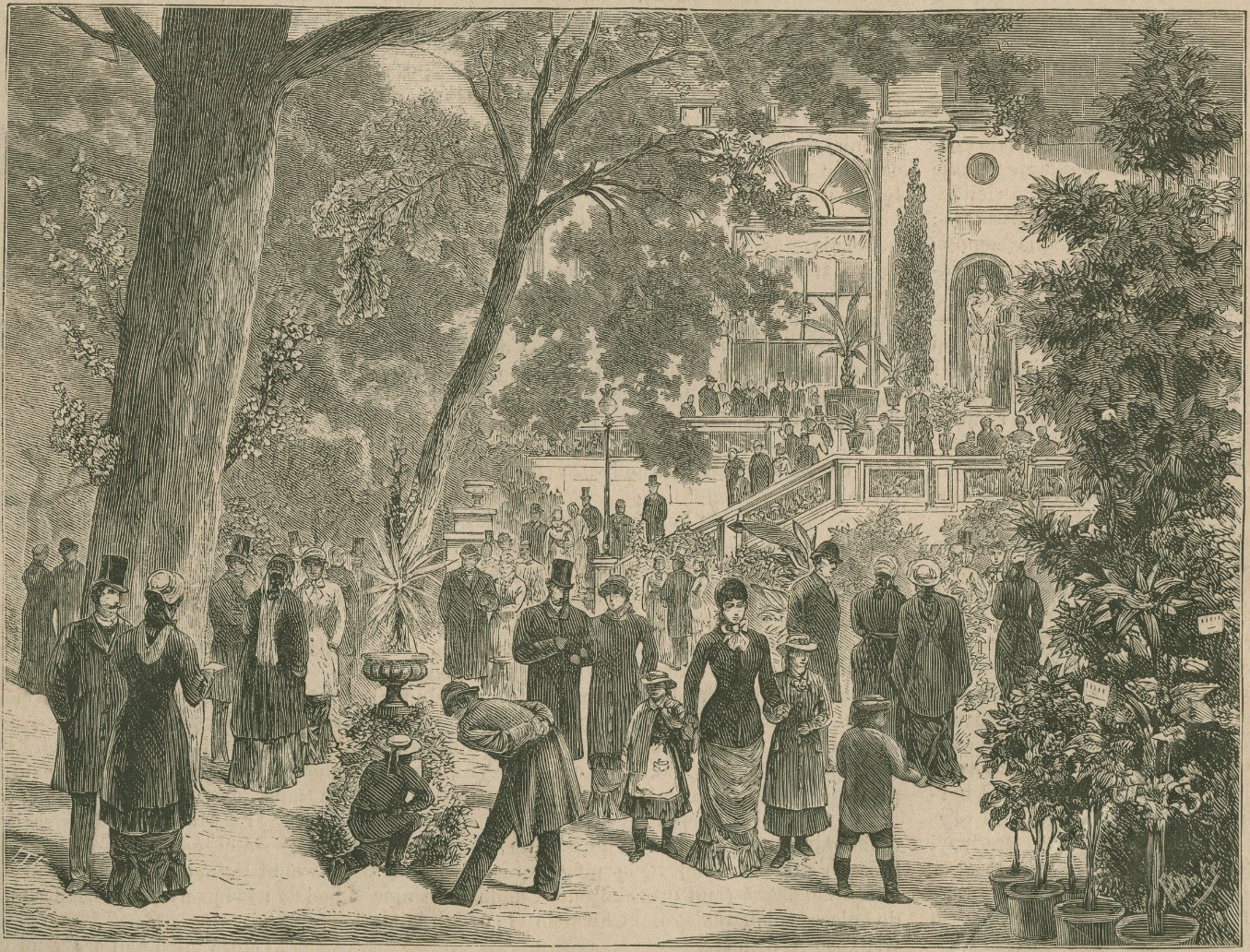Flower exhibition in Wilanów, 19–21 May 1853
The flower exhibition held by August [1] and Aleksandra Potocki [2] from 19 to 21 May 1853 was an exceptionally dramatic show of Wilanów’s botanical wealth. Just as the year before, it was designed under the direction of Inspector of the Gardens Franciszek Pelda [3]. The extant historical sources record a total of 65 plant species and varieties. The core of the exhibition were the plants known from the descriptions and inventory lists of the Wilanów gardens from the later 17th and 18th century: cypress (Cupressus L.), date (Phoenix L.), olive (Olea europaea L.), orange and lemon (Citrus L.), myrtle (Myrtus L.), bay laurel (Laurus nobilis L.) an peach (Prunus persica [L.] Batsch) in its light pink full-flowered variety. These were complemented by various species of exotic trees: acacia (Acacia L.), including kangaroo thorn (Acacia paradoxa DC.), Queensland pine (Araucaria cunninghamii Mudie, Araucaria columnaris [G.Forst.] Hook.), Atlas cedar (Cedrus atlantica [Endl.] Manetti ex Carrière), horoeka (Pseudopanax crassifolius [Sol. ex A.Cunn.]), Mediterranean buckthorn (Rhamnus alaternus L.), Japanese cedar (Cryptomeria japonica [Thunb. ex L.f.] D.Don), yellowwood (Podocarpus L'Hér. ex Pers.) and thuja (Thuja L.). Botanical curiosities included disocactus (Disocactus phyllanthoides [DC.] Barthlott), pitcher plant (Nepenthes distillatoria L.), true indigo (Indigofera tinctoria L.), candlestick banksia (Banksia attenuata R.Br.) and the Amazon water lily (Victoria amazonica [Poepp.] Klotzsch).
A true gem of the exhibition were the flowering azalea and rhododendron shrubs (Rhododendron L.), including Indian azalea (Rhododendron simsii Planch.) in its orange-flowered and ‘Wellington’ white-and-violet-flowered varieties, yellow azalea (Rhododendron luteum Sweet) and tree rhododendron (Rhododendron arboretum Sm.) in its white, pink and light red varieties. They were accompanied by Japanese camellias (Camellia japonica L.) with pale pink flowers and pink, light red, and white stripes, Japanese quince (Chaenomeles japonica [Thunb.] Lindl. ex Spach), woodland peonies (Paeonia obovata Maxim.) and Provence roses (Rosa × centifolia L.).
The greatest variety could be found among herb plants, which complemented the compositions, and among the tree and shrub group. The descriptions list the following species: alpine cyclamen (Cyclamen alpinum Dammann ex Sprenger), cineraria (Pericallis × hybrida [Bosse] B.Nord.), in their blue and violet varieties, wild pansy (Viola tricolor L.), clove pink (Dianthus caryophyllus L.) in its striped yellow, full-flowered peach, and pale pink varieties, calla lily (Zantedeschia aethiopica [L.] Spreng.), nodding catchfly (Silene pendula L.), stock (Matthiola R. Br.) in the striped-flowered and white varieties, Douglas' meadowfoam (Limnanthes douglasii R.Br.), butterfly flower (Schizanthus pinnatus Ruiz & Pav.), alpine forget-me-not (Myosotis alpestris F.W.Schmidt), air plant (Tillandsia L.), slipperwort (Calceolaria L.) in 7 different varieties, auricula (Primula auricula L.), pennie black (Nemophila discoidalis Lem. 'Penny Black') and baby blue eyes (Nemophila menziesii Hook. & Arn.), stonecrop (Sedum L.), Australian heaths (Epacris Cav.), heathers (Calluna [L.] Hull), heaths (Erica Tourn. ex L.), windflower (Anemone L.). Sources also mention bulb and tuber plants: hyacynths (Hyacinthus Tourn. ex L.), buttercups (Ranunculus L.), manyflowered narcisses (Narcissus tazetta L.), jonquils (Narcissus jonquilla L.) and tulips (Tulipa L.) in numerous varieties, including red-striped yellow and full-flowered.
[1] August Potocki (born 17 March 1806, died 30 January 1867) – Polish aristocrat, husband of countess Aleksandra Potocka, courtier of Russian Emperor Nicholas I and owner of the Wilanów palace from 1840 to 1867.
[2] Aleksandra Potocka née Potocka (born 26 March 1818 in Petersburg, died 6 January 1892 in Warsaw) – Polish aristocrat, wife of count August Potocki and owner of the Wilanów palace from 1840 to 1892.
[3] Franciszek Pelda (born 1820 in Prague, died 13 January 1877 in Puławy) – a gardener of Czech origin, the inspector at Wilanów gardens in 1845–1855, an employee of the Institute of Engineering, Agriculture and Forestry in Puławy in 1862–1869 and the administrator of buildings of the Institute of Agriculture and Forestry in Puławy in 1869–1875.
This text is part of the implementation tasks of the Author’s doctoral thesis Technical, aesthetic and management standards of restoring an exotic plant collection in historic gardens exemplified by the Wilanów residence, conducted in cooperation with Cracow University of Technology and the Museum of King Jan III’s Palace at Wilanów, financed by the Ministry of Education and Science under the 5th edition of the “Implementation doctorate” programme.
Bibliography
- Kucz K., Pamiętniki miasta Warszawy z roku 1853, vol. 1, Warszawa 1854, pp. 240–251.
- "Kurjer Warszawski", no. 129, 9 (21) May 1853, pp. 668–669.
- "Kurjer Warszawski", no. 130, 11 (23) May 1853, pp. 674–676.
- Kuśmierski J., Wilanów citrus collection in the nineteenth century, Passage to knowledge Museum of King Jan III’s Palace at Wilanów, 06.10.2021. https://www.wilanow-palac.pl/wilanow_citrus_collection_in_the_nineteenth_century.html
- Kuśmierski J., Wilanów Orangery collection in exhibitions over the second half of the nineteenth century, Passage to knowledge Museum of King Jan III’s Palace at Wilanów, 06.10.2021. https://www.wilanow-palac.pl/wilanow_orangery_collection_in_exhibitions_over_the_second_half_of_the_nineteenth_century.html
- Kwiatkowska M.I., Rzeźbiarze warszawscy XIX wieku, Warszawa 1995.
- Świtek A., Rzeźba i mała architektura w ogrodach wilanowskich, Warszawa 2019.
- Wystawa kwiatów w Willanowie, "Gazeta Warszawska", no. 129, 9–21 May 1853, pp. 5–6.
